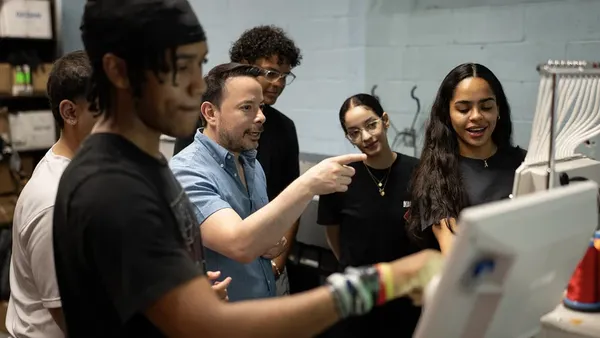Dive Brief:
- Recent research from the Learning Policy Institute and Wallace Foundation highlights best practices to bolster support and investment in summer learning programs from nine geographically and politically diverse states.
- Researchers examined how state leaders in Georgia, Louisiana, Massachusetts, Michigan, New Mexico, Oregon, Tennessee, Texas and Vermont are approaching summer programming as a key driver to help students recover from learning gaps that widened during the COVID-19 pandemic.
- While summer learning can help boost academic achievement beyond the traditional school year, state leaders see value in these programs for helping to support mental health and social connections for students, according to the research.
Dive Insight:
Summer learning programs have played a significant role in many state and local strategies to help address learning loss following the pandemic, leading to their prioritization in pandemic relief spending.
To increase access to summer learning options, states are working to expand funding options through grants and other financial avenues, the LPI and Wallace Foundation report says.
But as funding streams like the federal Elementary and Secondary School Emergency Relief Fund are winding down, states are working to maintain more long-term support — both politically and financially — to sustain summer learning opportunities. They recognize that in addition to academic learning, these programs can also provide career training, social-emotional benefits, and support for working families that may struggle with child care when the academic year ends.
To ensure that summer learning programs remain available and open to as many students as possible, states are collecting data such as participation rates and performance metrics to illustrate the effectiveness of these opportunities.
The LPI and Wallace Foundation research identifies five “categories of action” in the data analyzed from the nine states it used as case studies. They include how state leaders:
- Built support for summer learning investments.
- Implemented state grant programs to fund those efforts.
- Increased access for specific student groups, including those performing below grade level, those needing additional services, and those from underserved communities.
- Promoted rigorous, high-quality programming while maintaining flexibility for providers.
- Collected and used data to measure impact, inform improvement efforts, and advocate for ongoing investment.
Based on their findings, the study’s authors identify policy considerations for each category of action. “In many states, the full potential of the summer months remains untapped,” the researchers wrote. “As state leaders consider future involvement in the summer learning sector, they can learn from the approaches that have worked for other states and adopt or modify those that align with their unique state goals and contexts.”






 Dive Awards
Dive Awards






